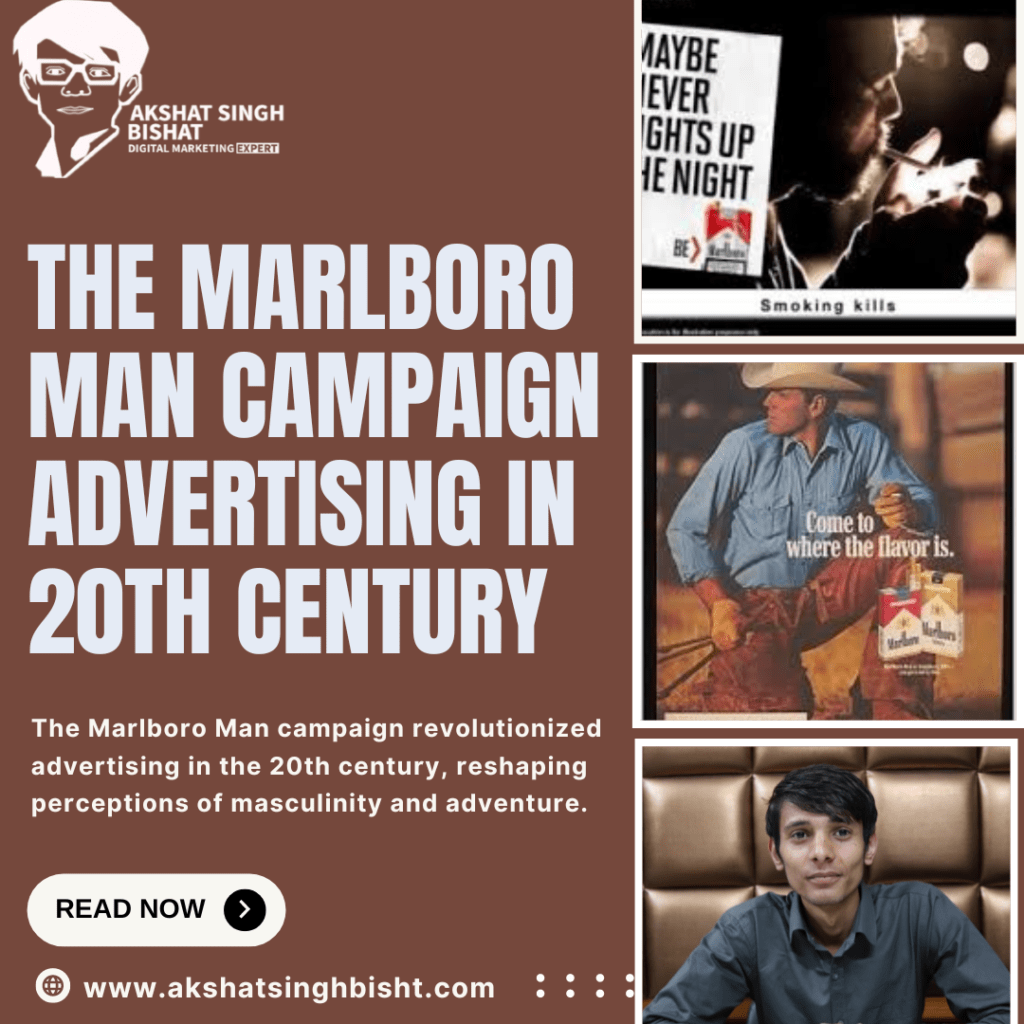Explore the iconic Marlboro Man campaign that captivated audiences for decades with its rugged cowboys, outdoor settings, and powerful storytelling. Discover how this advertising masterpiece transformed Marlboro into a global powerhouse, appealing to the adventurous spirit and masculinity of consumers. Learn how the campaign’s emotional connection, consistency, and iconic imagery made the Marlboro Man a symbol of freedom and independence, creating a lasting brand identity that continues to resonate with audiences today.

The Marlboro Man campaign is one of the most iconic and influential advertising campaigns in history. Launched in the 1950s by Leo Burnett Worldwide for the Marlboro brand owned by Philip Morris, the campaign revolutionized the marketing of cigarettes. The campaign’s central figure, the rugged Marlboro Man, became an enduring symbol of masculinity and adventure, transforming Marlboro from a niche brand targeted at women into the bestselling cigarette brand globally.
In the early 1950s, Marlboro cigarettes were struggling in the market, primarily perceived as a feminine brand due to their original target audience of women. Furthermore, amidst growing health concerns about smoking, the market for cigarettes was becoming increasingly challenging. Recognizing the need to rebrand and reposition Marlboro to appeal to a broader audience, Philip Morris sought to create a campaign that would resonate with male consumers, particularly those in the bluecollar demographic.
Philip Morris conducted extensive market research to understand the preferences and perceptions of their target audience. They found that male smokers, especially those in rural areas, were drawn to images of ruggedness, independence, and masculinity. This insight laid the foundation for the development of the Marlboro Man campaign.
The marketing strategy behind the Marlboro Man campaign was to redefine Marlboro as a brand associated with masculinity and the spirit of the American West. This involved a complete overhaul of Marlboro’s image, from its packaging to its advertising.
The primary buyer persona for the Marlboro Man campaign was the rugged, independent American male, typically working in bluecollar professions such as ranching, farming, or construction. This persona valued qualities such as toughness, selfreliance, and freedom.
The ads prepared for the Marlboro Man campaign featured striking imagery of a cowboy in rugged landscapes, often accompanied by horses, cattle, or the open plains. The most catchy points of these ads were:
The execution of the Marlboro Man campaign involved strategic placement of ads in print media, billboards, and later, television. The ads were carefully crafted to evoke emotion and resonate with the target audience, leveraging powerful imagery and minimalistic messaging.
Despite its success, the Marlboro Man campaign faced several challenges, including:
The customer reaction to the Marlboro Man campaign was overwhelmingly positive among its target audience. Male smokers, especially those in rural and bluecollar demographics, identified with the rugged, independent persona of the Marlboro Man. However, the campaign also faced criticism from health advocates and antismoking groups for glamorizing smoking and downplaying its health risks.
The success of the Marlboro Man campaign can be attributed to its ability to tap into deepseated psychological desires and aspirations of consumers. By associating the Marlboro brand with themes of masculinity, adventure, and freedom, the campaign appealed to consumers’ need for selfexpression, identity, and escapism.
In conclusion, the Marlboro Man campaign stands as a testament to the power of branding, storytelling, and emotional appeal in marketing. By redefining Marlboro as a symbol of American masculinity and adventure, the campaign transformed the brand and achieved unprecedented success in the cigarette industry. However, it also sparked debates about the ethics of marketing addictive and harmful products. Nonetheless, the Marlboro Man remains an enduring cultural icon, symbolizing the spirit of the American West and the power of effective marketing.
Akshat’s passion for marketing and dedication to helping others has been the driving force behind AkshatSinghBisht.com. Known for his insightful perspectives, practical advice, and unwavering commitment to his audience, Akshat is a trusted voice in the marketing community.
If you have any questions simply use the following contact details.
